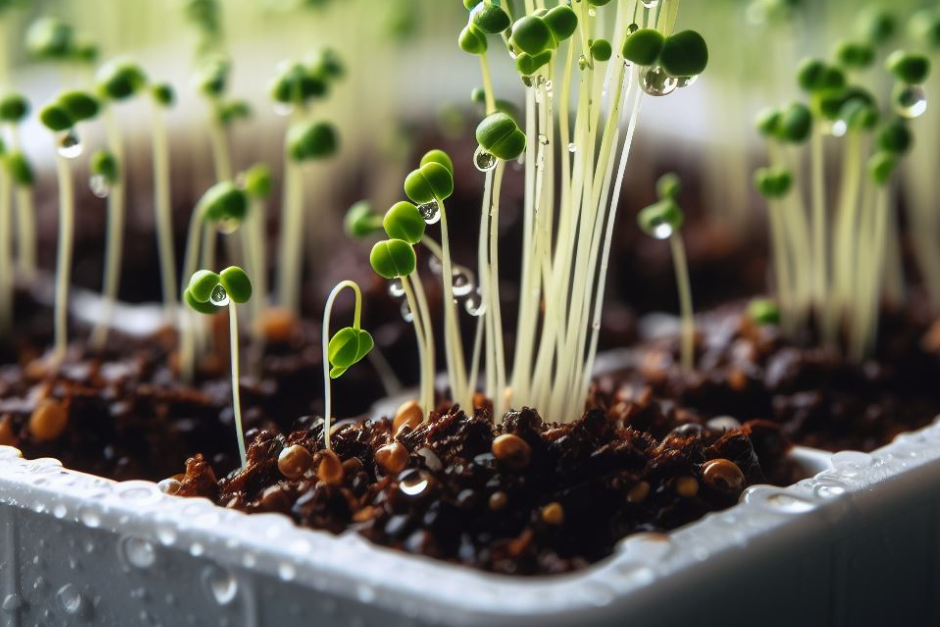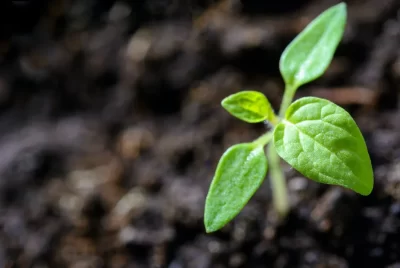How to Choose the Right Seeds for Growing Microgreens
Introduction
As a devoted enthusiast of microgreens, I’m thrilled to share the ins and outs of selecting the right seeds for a thriving harvest. These petite powerhouses of flavor and nutrition have taken the culinary world by storm, captivating chefs and home gardeners alike. In this guide, we’ll delve into the crucial factors to consider when choosing seeds for microgreens, ensuring you embark on a successful growing journey tailored to your taste and nutritional preferences.
What are microgreens and why are they popular?
Microgreens are young, tender plants that are harvested when they have just developed their first set of true leaves. Despite their small size, microgreens pack a powerful punch of flavor and nutrition. They have gained popularity in recent years due to their vibrant colors, unique flavors, and high concentration of vitamins and minerals. These tiny greens are not only visually appealing but also incredibly versatile, making them a favorite among chefs and home gardeners alike. By choosing the right seeds for growing microgreens, you can ensure a successful and bountiful harvest of these nutrient-rich beauties.
Understanding the different types of seeds for microgreens
Choosing the right seeds for growing microgreens is key to a successful harvest. There are various types of seeds available, each with its unique flavor profile and nutritional benefits. Some popular options include broccoli, radish, sunflower, and pea shoots. It’s important to consider factors such as taste, texture, and color when selecting seeds for your microgreens. Additionally, certain varieties may have specific growing requirements, such as preferred soil conditions or light exposure. By understanding the different types of seeds available, you can customize your microgreen garden to suit your taste preferences and nutritional needs.

Factors to consider when choosing seeds for microgreens
Choosing the right seeds for growing microgreens is a key step in ensuring a successful and bountiful harvest. There are several factors to consider when selecting seeds for microgreens, such as the variety, seed quality, and germination rate. Different varieties of microgreens have different flavors and textures, so it’s important to choose seeds that align with your taste preferences. Additionally, selecting high-quality seeds from reputable sources will increase the chances of a successful germination and healthy growth. Lastly, considering the germination rate of the seeds will help you plan and optimize your growing process. By taking these factors into account, you can set yourself up for a thriving microgreens garden and enjoy the freshest and most nutritious greens right at your fingertips.
Assessing the growth rate and germination time of seeds
Assessing the growth rate and germination time of seeds is key to selecting the right seeds for growing microgreens. Different types of seeds have varying growth rates and germination times, which can significantly impact the success of your microgreen garden. By understanding these factors, you can ensure a consistent and efficient harvest. For example, some seeds like radish and broccoli sprout quickly, making them ideal for those who want a fast turnaround. On the other hand, seeds like basil and cilantro take longer to germinate but offer unique flavors and textures. By considering the growth rate and germination time of seeds, you can tailor your microgreen garden to your preferences and maximize your yield.
Evaluating the flavor and taste of microgreen seeds
Evaluating the flavor and taste of microgreen seeds is a vital step in choosing the right seeds for growing these nutrient-rich greens. While it may be tempting to focus solely on the visual appeal or growth rate of the seeds, the flavor profile should not be overlooked. Different varieties of microgreens offer a wide range of tastes, from mild and delicate to bold and peppery. By selecting seeds with flavors that complement your culinary preferences, you can elevate the taste of your dishes and create a more enjoyable dining experience. Experimenting with different seed varieties will not only add diversity to your microgreen garden but also allow you to discover unique and exciting flavor combinations.
Considering the nutritional value and health benefits of microgreens
When it comes to growing microgreens, choosing the right seeds is key to maximizing their nutritional value and health benefits. Not all seeds are created equal, and some varieties of microgreens pack a more powerful punch than others. For example, broccoli microgreens are known for their high levels of vitamins C and K, while sunflower microgreens are rich in essential fatty acids. By carefully selecting the seeds you use, you can customize your microgreen garden to meet your specific dietary needs and preferences. So, before you start sowing, take the time to research different seed varieties and their unique nutritional profiles to ensure you’re cultivating the healthiest and most nutrient-dense microgreens possible.
Choosing seeds based on color and appearance of microgreens
When it comes to growing microgreens, choosing the right seeds based on their color and appearance is key to producing vibrant and cooking. The color and appearance of microgreens can vary greatly depending on the type of seed used. For example, red amaranth seeds will produce microgreens with striking red stems and leaves, while broccoli seeds will yield microgreens with dark green leaves and a mild, nutty flavor. By carefully selecting seeds based on their desired color and appearance, growers can create visually appealing and delicious microgreens that are sure to impress both the eye and the palate.

Selecting organic and non-GMO seeds for growing microgreens
Selecting organic and non-GMO seeds for growing microgreens is a fundamental aspect of achieving healthy and nutrient-rich sprouts. Organic seeds are grown without the use of synthetic pesticides or fertilizers, ensuring that your microgreens are free from harmful chemicals. Additionally, choosing non-GMO seeds guarantees that your microgreens have not been genetically modified, preserving their natural qualities. By opting for organic and non-GMO seeds, you not only support sustainable farming practices but also provide yourself with the freshest and most flavorful microgreens possible.
Where to buy high-quality seeds for microgreens
When it comes to growing microgreens, choosing the right seeds is essential for success. While there are many options available, it’s important to source high-quality seeds for optimal results. One of the best places to buy these seeds is from reputable seed companies that specialize in microgreens. These companies often offer a wide variety of seeds specifically selected for their suitability for growing microgreens. Additionally, they often provide detailed information about each seed variety, including germination rates and flavor profiles, allowing you to make informed choices. By investing in quality seeds, you can ensure that your microgreens will thrive and provide you with the fresh and nutritious greens you desire.
Tips for successful seed selection and growing microgreens
Choosing the right seeds is essential for successful microgreen growth. When selecting seeds for microgreens, it is important to consider factors such as germination rate, flavor, and nutritional value. Look for seeds that have a high germination rate to ensure a higher success rate in sprouting. Additionally, consider the flavor profile you desire for your microgreens and choose seeds that will provide the desired taste. Lastly, keep in mind the nutritional value of the seeds, as different seeds offer varying levels of vitamins and minerals. By carefully selecting your seeds, you can ensure that your microgreens will not only be visually appealing but also packed with flavor and nutrients.
Conclusion
In the world of microgreens, seed selection is the cornerstone of a flourishing harvest. By understanding the nuances of different seed varieties, assessing growth rates, and considering flavor profiles, you’ll craft a microgreen garden that’s as visually stunning as it is deliciously nutritious. Remember, choosing organic, non-GMO seeds from reputable sources is a surefire way to guarantee the freshest and most vibrant microgreens possible. So, with the right seeds in hand, you’re poised to cultivate a bounty of these nutrient-rich greens that will elevate your culinary creations.
FAQs
- Where can I buy high-quality seeds for microgreens?
When it comes to sourcing top-notch microgreen seeds, reputable seed companies specializing in microgreens are your best bet. They offer a wide selection of seeds tailored for microgreen cultivation, along with detailed information on germination rates and flavor profiles. - What factors should I consider when choosing seeds for microgreens?
Key factors to keep in mind include germination rate, flavor profile, and nutritional value. Opt for seeds with high germination rates for a better sprouting success. Additionally, select seeds that align with your desired taste and dietary requirements. - Why is it important to choose organic and non-GMO seeds for microgreens?
Selecting organic and non-GMO seeds ensures that your microgreens are free from harmful chemicals and have not been genetically modified. This choice supports sustainable farming practices and guarantees the freshest, most natural microgreens. - How do I assess the growth rate and germination time of microgreen seeds?
Understanding the growth rate and germination time of different seed varieties is crucial. Some seeds, like radish and broccoli, sprout quickly, providing a fast turnaround. Others, like basil and cilantro, take longer but offer unique flavors and textures. - Can I select seeds based on color and appearance of microgreens?
Absolutely! The color and appearance of microgreens vary based on the seed type. For example, red amaranth seeds yield microgreens with vibrant red stems and leaves, while broccoli seeds produce greens with dark green leaves and a mild, nutty flavor. Choosing seeds based on desired visual appeal adds an artistic touch to your microgreen garden.



